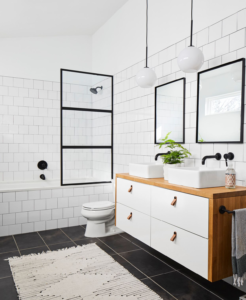A well-maintained fence is a key part of property safety and security. It’s important to check for damage frequently and address it immediately.
Be sure to have the right tools on hand, such as a pry bar, reciprocating saw and a drill. Also, make sure to call 811 before digging. Click the Fence Repair Summerville to learn more.

When a board is broken it is usually because of stress on the board exceeding the tensile strength. This stress causes a crack that can spread from either end to the front of the board. Boards that are glued together do not break as easily because they have to break where the wood is strongest.
To repair a broken board first loosen any fasteners that hold it in place, then apply heat to the affected area and use a weight to apply pressure until it cools and straightens. It may be necessary to replace the board entirely if it is severely warped.
If you’re planning to replace the board it is best to measure the length and width of the existing one, then cut replacement boards to size. Pre-drilling holes and applying a liberal amount of wood glue to the ends can help prevent splitting.
Loose Posts
Over time, loose fence posts can pull away from their concrete footing and sway, potentially impacting the overall strength of your fence. Fortunately, this common issue can be fixed easily and cheaply by using a fence post repair spur to add an extra layer of stability. These metal spurs are hammered onto the bottom of your fence posts to help them stay in place and are often used for wood or vinyl fencing. They are also great for adding an extra layer of support to a steel or aluminum fence that may have been installed improperly or is simply suffering from a lack of ground stability.
There are a number of reasons that your fence posts may become loose, from rot to soil instability and even harsh weather conditions like heavy rains that cause the earth to shift and soften. Regardless of the reason, it’s important to address these issues quickly before they lead to larger and more costly problems down the road.
When you’re determining the best method to repair a wobbly post, it’s first necessary to play Sherlock Holmes with your structure. Locate the loose post and identify the root cause of its instability by digging a few inches down to reveal the original footing underneath. This will help you determine if your post is actually broken and needs to be replaced or if it’s simply loose in its concrete footing and can be stabilized with additional support.
Depending on the severity of the problem, it might be worth calling in a professional to conduct a thorough assessment and recommend the best long-term solution. For more minor issues, however, you can use tension rods to pull a loose post back into a vertical position. This quick fix will give your fence a sleek look and provide additional support to keep it stable in the future.
To reinforce your loose fence post, you’ll need a few basic tools like a pry bar, screwdriver and hammer to remove the existing hardware that holds the board in place. Once removed, measure and cut a replacement board that matches the size of the original and attach it with nails or screws, using a drill if necessary. Once attached, be sure to seal the new board with a moisture retardant to ensure longevity.
Leaning Fences
A leaning fence is not only unsightly, but it can also be a serious safety hazard for anyone passing by. If your fence starts to sag, it’s important to evaluate the cause of the lean before starting any repair work. You can do this by pushing against the post to see if it gives easily or resists. This will help you to determine whether the post is loose from rot or an unstable footing. It’s also important to check below ground, as invading tree roots can be a major contributor to a leaning fence.
The most common reason that a fence will begin to sag is due to a broken post or a rotten one. Moisture and soil instability are also contributing factors, as they can weaken the posts by making them wetter or more prone to movement. This is particularly true for wood fence posts, as they can rot over time and cause the structure to become unstable.
A rotten or damaged post can often be fixed by bracing it. However, if the rot is severe or the post has been cracked or split, it will need to be replaced. In these cases, it’s best to hire a professional fence installation specialist.
In some cases, a fence may begin to sag due to a faulty concrete footing. This can be a difficult repair to make, as it requires digging out the existing post and properly sinking a new one. The best way to prevent this type of problem is by ensuring that the footing is properly prepared and compacted before adding the new post.
If the sagging is due to an unstable footing, it can usually be corrected by adding a retaining wall or re-paving the area. This will add stability to the site and prevent future problems.
Leaning fences can be caused by many different issues, and it’s important to understand why the fence is leaning before you can fix it. A thorough inspection can usually point to the cause, so you can make a plan for repair or replacement.
Seasonal Maintenance
The seasons impact your fence in different ways, and regular maintenance can prevent some common problems. Winter is a good time to inspect for damage and prepare the structure for harsh weather. Check for loose posts and panels, rot or sagging.
Address rust promptly on metal fences, using wire brushes and sandpaper to remove it and applying a rust-inhibiting primer and repainting. It’s also a great time to inspect for and repair any gates that are not functioning properly.
Summer brings intense sun exposure that can fade paint and dry out wood, causing it to crack or warp. Regular inspections and immediate repairs can keep your fence looking like new for years. For an extra boost, consider staining your fence to block out harmful UV rays and maintain its color for longer.
Autumn is the season of falling leaves and frost, which can cause significant damage to a fence if left unattended. Fallen leaves can trap moisture against the fence, promoting rot and erosion. It’s important to regularly clean your fence and clear away debris, especially after storms.
A good fall clean will also ensure that your fence has adequate airflow, helping it to resist rotting. This is a good time to examine all the elements of your fence, including posts, rails, and pickets. Check for sagging or loose areas and re-secure them, as well as checking the stability of the posts in the ground.
During spring, it’s important to inspect the fence for signs of rot or decay at the base of wooden posts. If this is left unaddressed, it can lead to weakened posts and a collapsed structure. Re-secure all loose or sagging panels and replace any damaged wood. This is a good time to apply a fresh coat of stain.
Inspecting the fence for rot or deterioration after each season can help you identify and repair problems before they become more serious. Keeping up with routine maintenance will also save you money on costly repairs in the future. If you aren’t comfortable completing these tasks, it may be a wise investment to hire a professional to assist with your fence repair.
